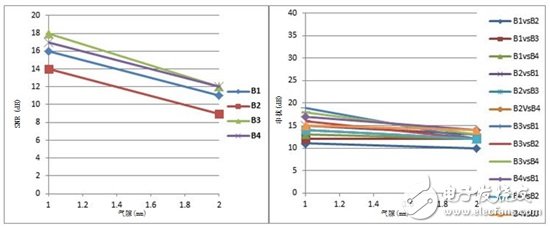Not interested in the magical techniques introduced in previous blog posts? So take a look at this: We have been researching transmissive glass touch applications all the time and have finally succeeded in making improvements. By using the MSP430TM microcontroller (MCU) and CapTIvateTM technology (MSP430FR2633), we have achieved button-click control of light-emitting diodes (LEDs) and liquid crystal displays (LCDs) instead of not only being limited to low through glass. The button sensing function described in the power touch reference design (TIDA-00343) . Figure 1 is a block diagram of a transmissive touch glass reference design (TIDA-00494) with an LCD.

Figure 1: LCD reference design block diagram (TIDA-00494)
If you recall my previous blog post, you will know that process equipment operators need to implement programming functions through the keyboard every day. The keyboard is housed in a screw-on, explosion-proof metal enclosure with thick glazing, and local readings are displayed on the LCD (see Figure 2).

Figure 2: TIDA-00494 Transmissive Glass Touch Reference Design
Factory automation and process control designers have struggled to find ways to allow operators to interact with explosion-proof field conveyors without having to spend time opening the enclosure.
Let us think about what existing technologies can solve this problem:
Infrared technology detects button clicks by changes in light caused by a finger approaching the sensor. However, this technology is not reliable in an industrial environment. This is because if the glass on the button area is stained with oil, dirt, or spots, it may cause touch detection errors.
Magnetic device solutions require a magnetic switch that shuts down when a strong magnetic field is detected nearby. However, the user needs to prepare a magnetic pen for generating a magnetic field at any time.
Capacitor technology solves these problems; in addition, because adding buttons only means adding extra copper to the PCB, the number of buttons does not affect the price of the application.
We have proven the robustness of CapTIvateTM technology through numerous tests, including bare hand touch, gloved touch, and even attempts to create false touch scenes. In each test, we collected 1000 samples of the click button and 1000 samples that did not perform any operations. The average and standard deviation of each event are then calculated to estimate the signal-to-noise ratio (SNR) and crosstalk of the button.
If you want to ensure that the probability of the button being touched is equal to 99.73%, the SNR must be greater than 9.5dB. Crosstalk must also be greater than 9.5dB if you want to ensure that button clicks do not affect adjacent buttons. The test results meet these thresholds, as shown in Figure 3.

Figure 3: Touch and crosstalk test
Capacitor technology has its limitations in terms of the required air gap between glass and PCB (as I mentioned in previous blog posts), which requires that the air gap be as small as possible.
Although there is a 2mm air gap between the electrode plate and the 10 mm thick glass in the reference design, it can still detect the touch of bare hands and the touch of the glove, and can be used on the LED and LCD with only one chip. Give feedback.
other information:
View the reference design for high temperature touch through glass (TIDA-00464).
Read the blog "Touch Screen HMI" on Industrial Strength.
Order the Sharp Memory LCD BoosterPack plug-in module.
Usb Switched Socket,Single Gang Usb Socket,Usb Socket With Switch,Double Sockets With Usb
Wenzhou Niuniu Electric Co., Ltd. , https://www.anmuxisocket.com
